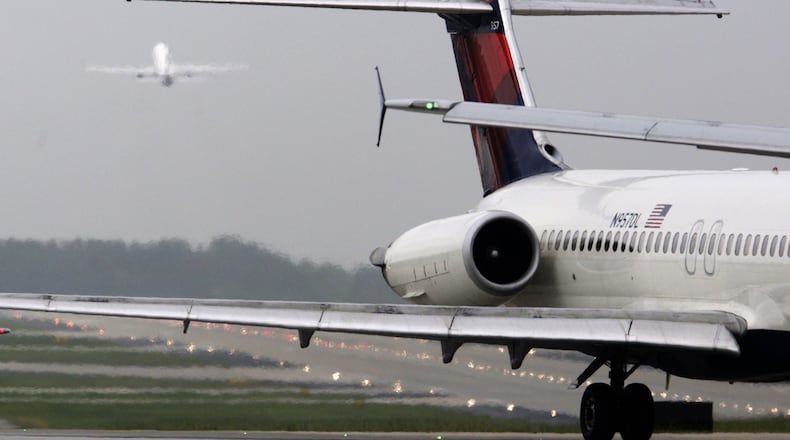Eighty-five percent of Georgia residents live within a 60-minute drive of a commercial airport, but some of the smaller facilities struggle to attract flights and passengers, according to a new study by the Georgia Department of Transportation.
"Having access to an airport with scheduled commercial airline service is important for Georgia's economy," says the GDOT study.
But there's "just a tremendous number of obstacles to small community air service," said the agency's intermodal director Carol Comer during a presentation at an Urban and Regional Air Mobility workshop in Atlanta.
With Hartsfield-Jackson International Airport as the only hub airport in the state, the reality is that Georgia residents "routinely drive more than three hours to depart on a commercial flight from the airport," the study says.
The findings are part of GDOT's statewide aviation system plan, which is updated every 10 to 15 years and aims to "identify the deficiencies in Georgia's aviation system," according to the agency. The January 2019 report was prepared by Jviation Inc. for GDOT, and follows a 2003 update.
Mike Boyd, an aviation consultant based in Colorado, said the share of people within a 60-minute drive of a commercial airport shows "how well Georgia is connected to the global economy."
The 85 percent measure includes people who live within an hour’s drive of commercial airports in Georgia and in surrounding states. Georgia’s commercial airports include Atlanta, Savannah, Augusta, Macon, Columbus, Albany, Valdosta and Brunswick — as well as Athens, which is a commercial airport but doesn’t currently have airline service.
“Some of those small communities really struggle” with few flights and low passenger counts, Comer said.
Other airports within an hour’s drive of Georgia include Dothan, Ala.; Tallahassee, Fla.; Jacksonville, Fla.; Chattanooga, Tenn.; and Greenville, S.C.
GDOT’s objective is to have all of Georgia within a 60-minute drive of a commercial airport or a 45-minute drive of a general aviation airport with significant ability to handle business aircraft.
The vast majority of the state is covered, but not all of it. A commercial airport is certified for airline service, while a general aviation airport serves private planes and business aircraft.
There is a coverage gap in the growing Dawson/Forsyth county area north of Atlanta, according to the study. “As development continues to push north out of the Atlanta metro area, opportunities for securing the acreage needed to support an airport capable of supporting business needs are becoming more scarce,” the report says.
The city of Atlanta owns close to 10,000 acres in Dawson, originally acquired in the 1970s as a possible site for a second airport, but a 2011 study by Hartsfield-Jackson looked at that site and others and determined that none were financially feasible as a second commercial airport.
In some other parts of the state, airport demand is low because of a “lack of population and employment,” according to the report. And there are geographical challenges, such as the Okefenokee Swamp and the North Georgia mountains, Comer said. “I don’t know that we’ll ever be at 100 percent,” she said.
Ray Rasker, executive director of research nonprofit Headwaters Economics and author of a 2009 study on the economic importance of air travel in rural areas, said "the places that are connected with an airport over time start behaving a lot more like a big city."
An airport represents the ability of a business person “to travel somewhere else and meet face-to-face and establish trust,” Rasker said. If access to air service declines, “it’s going to further impoverish rural America.”
The GDOT report noted that travelers "may be willing to drive more than 60 minutes" to a commercial airport. Rasker said that may be true for an individual, "but if you're going to have a firm with a significant number of employees catching flights on a regular basis … you don't want to start having people be on the road for two hours before getting to an airport."
Of the eight airports in Georgia with airline service, five of them are served by a single passenger carrier: Albany, Valdosta, Brunswick and Columbus have Delta Air Lines as the sole carrier, while Macon has service by Contour Airlines, subsidized by the federal Essential Air Service program. Fares can be higher for flights to small airports where there is no competition.
The report noted that in the past several years, Athens-Ben Epps Airport lost airline service and Macon’s airport had sporadic service.
“As airlines continue to look for ways to increase revenue and decrease costs, communities whose service is provided by a single carrier could find themselves at risk,” the report says, adding that it’s unlikely Georgia will attract scheduled airline service to more airports.
“The economics of these short-haul markets to small cities aren’t getting any better,” Boyd said. “The state of Georgia is facing realities and trying to plan within those realities.”
The report recommends that commercial airports “take every action available to them to urge their communities to patronize the local commercial airport; this is the best way to underpin a solid foundation for Georgia’s commercial airport system.” GDOT said it uses the plan’s recommendations to prioritize state and federal investments.
About the Author
Keep Reading
The Latest
Featured






